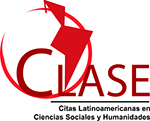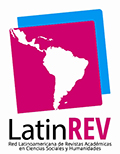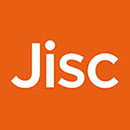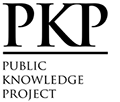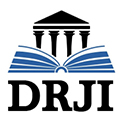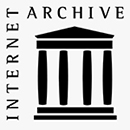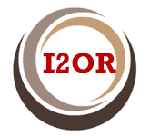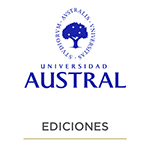Can a Blockchain-based Registry Function as a “protection/safeguard Tool” for Artificial Intelligence Generated Artwork?
Abstract
The present paper intends to reflect how artificial intelligence (AI) artworks question the need to dynamise copyright and expose the role of technology both in the creative process and the management of copyright. The purpose is to evidence the intersection between art and technology and evoke, faced with the present legal gap of intellectual property (IP) with regard to AI generated artworks, the chance to implement the use of systems or mechanism lined up with technology to execute, enforce and claim rights as well as for an adequate, active and agile surveillance based on safe, traceable and immutable information. In order to do this, the tensions and frictions between human and artificial creativity within the framework of IP are approached and special characteristics of different cases are analysed. At the same time, the effectiveness of blockchain technologies and their impact on the IP ecosystem are studied and discussed through the whitepapers published by the world’s highest IP organization (WIPO). A highlight in this work is the underlying need of legal certainty about authorship and protection for the ever-changing realities even when there are still some gaps in the law. Finally, a solution to the dilemma and lack of copyright in this subject is not proposed but rather an alternative to contribute in this matter: this is the potential of a blockchain-based registry as an efficient tool for safeguarding “authorship/ownership” of AI generated works of art, in adittion of it’s value for that purpose and it usefulness, sustainability in time, providing transparency in the period of time before and after its legal regulation –if it’s occurs– without being an obstacle but fostering innovation.
Downloads
References
Ai-Da. (s.f.). Who is Ai-Da? https://www.ai-darobot.com/about.
Christie’s. (2018). Is artificial intelligence set to become art’s next medium. https://www.christies.com/features/A-collaboration-between-two-artists-one-human-one-a-machine-9332-1.aspx.
Clark, B. (febrero de 2018). La tecnología de la cadena de bloques y el Derecho de propiedad intelectual: ¿una pareja perfecta en el criptoespacio? OMPI Revista. https://www.wipo.int/wipo_magazine/es/2018/01/article_0005.html.
Comisión Europea. (2018). Comunicación de la Comisión al Parlamento Europeo, al Consejo Europeo, al Consejo, al Comité Económico y Social Europeo y al Comité de las Regiones. Inteligencia Artificial para Europa. https://eur-lex.europa.eu/legal-content/ES/TXT/PDF/?uri=CELEX:52018DC0237&from=ES.
Drexl, J., Hilty, R., Beneke, F., Desaunettes-Barbero, L., Finck, M., Globocnik, J., Gonzalez Otero, B., Hoffmann, J., Hollander, L., Kim, D., Richter, H., Scheuerer, S., Slowinski, P. R. y Thonemann, J. (2019). Technical aspects of Artificial Intelligence: An understanding from an Intellectual Property Law perspective. Max Planck Institute for Innovation and Competition Research Paper No. 19-13, 3-8.
Elgammal, A. (2018). When the line between machine and artist becomes blurred. The Conversation.
Garcia, C. (23 de agosto de 2016). Harold Cohen and Aaron -a 40- year collaboration. Computer History Museum. https://computerhistory.org/blog/harold-cohen-and-aaron-a-40-year-collaboration/.
Gayford, M. (16 de febrero de 2016). La Inteligencia artificial que se convirtió en aprendiz de pintor. MIT Technology Review.
Heredia Querro, S. (2020). Smart Contracts. IJ Editores.
Lipszyc, D. (2017). Derechos de Autor y Derechos Conexos. Cerlac.
López de Mántaras, R. (2018). El futuro de la IA: hacia inteligencias artificiales realmente inteligentes. En ¿Hacia una nueva Ilustración? Una década trascendente (pp. 1-15). BBVA.
López Tarruela, A. (2020). ¿Pueden las máquinas ser consideradas autores? Revista Telos, (112), 125-129.
Martínez-Polo, A. (11 de noviembre de 2016). Inteligencia artificial y Blockchain, el yin y el yang de la tecnología. PwC. https://ideas.pwc.es/archivos/20161111/inteligencia-artificial-y-blockchain-el-yin-y-el-yang-de-la-tecnologia/.
Merelle Ward, A. (31 de octubre de 2018). Auctioning Artificial Intelligence. The IP implications of Edmond de Belamy. IPKat. http://ipkitten.blogspot.com/2018/10/auctioning-artificial-intelligence-ip.html.
Nakamoto, S. (2008). Bitcoin: A Peer-to-Peer Electronic Cash System. Whitepaper.
Núñez, N. (2019). El primer cuadro de inteligencia artificial, vendido por Christie’s. El Pais. https://elfuturoesapasionante.elpais.com/el-primer-cuadro-de-inteligencia-artificial-vendido-por-christies/.
Oybin, M. (4 de junio de 2021). Delincuentes con pincel en el codicioso mundo del arte. La Nación. https://www.lanacion.com.ar/cultura/falsificadores-delincuentes-con-pincel-en-el-codicioso-mundo-del-arte-nid03062021/.
Organización Mundial de la Propiedad Intelectual. (2018). Creation of a Task to Prepare Recommendations for Blockchain. https://www.wipo.int/meetings/en/doc_details.jsp?doc_id=414991.
Organización Mundial de la Propiedad Intelectual. (2020a). Report by the Blockchain Task Force. https://www.wipo.int/meetings/en/doc_details.jsp?doc_id=523511.
Organización Mundial de la Propiedad Intelectual. (2020b). Blockchain Whitepaper Project. https://www.wipo.int/edocs/mdocs/patent_policy/en/wipo_webinar_standards_2020_01/wipo_webinar_standards_2020_01_presentationwp.pdf.
Organización Mundial de la Propiedad Intelectual. (2020c). WIPO Standards Blockchain #1. https://www.wipo.int/edocs/mdocs/cws/en/wipo_webinar_standards_2020_01/wipo_webinar_standards_2020_01_2.pdf.
Organización Mundial de la Propiedad Intelectual. (2021). WIPO Blockchain Whitepaper for IP ecosystems. https://www.wipo.int/edocs/mdocs/cws/en/wipo_webinar_standards_2021_19/wipo_webinar_standards_2021_19_presentation_yun.pdf.
Rojas, E. (2020). ¿Qué son los smart contracts o contratos inteligentes? Guía completa. Cointelegraph.
Saiz Garcia, C. (2019). Las obras creadas por sistemas de inteligencia artificial y su protección por el derecho de autor. Indret: Revista para el Análisis del Derecho, 1, 1-45.
Searle, K. R. (1980). Minds, brains, and programs. Behavioral and Brain Sciences, 3(3), 417-457.
Turing, A. M. (1950). Computing Machinery and Intelligence. Mind, 59(236), 433-460.
Una emergente nueva relación: Artistas e IA. (24 de septiembre de 2021). Espacio visual Europa.
Villasante, C. y Toribio, A. G. (2020). NFT y Fan Token, una aproximación jurídica y de mercado. ECIJA.
Wilkof, N. (2020). Blockchain Standard for IP Offices: The WIPO Blockchain Projects. TheIPKat. IPKittenBlog.
Zsabo, N. (1997). Formalizing and Securing Relationships on Public Networks. First Monday, 2(9). https://firstmonday.org/ojs/index.php/fm/article/view/548.
Copyright (c) 2023 Milagros Magnin Vergés

This work is licensed under a Creative Commons Attribution-NonCommercial-NoDerivatives 4.0 International License.
This license allows the copy, distribution, exhibition and representation of the work provided authorship is acknowledged and the work is properly quoted. Commercial use of the original work or the generation of derived works are not allowed.
The authors hereby guarantee the right to the first publication of the work to the Revista Iberoamericana de la Propiedad Intelectual.










